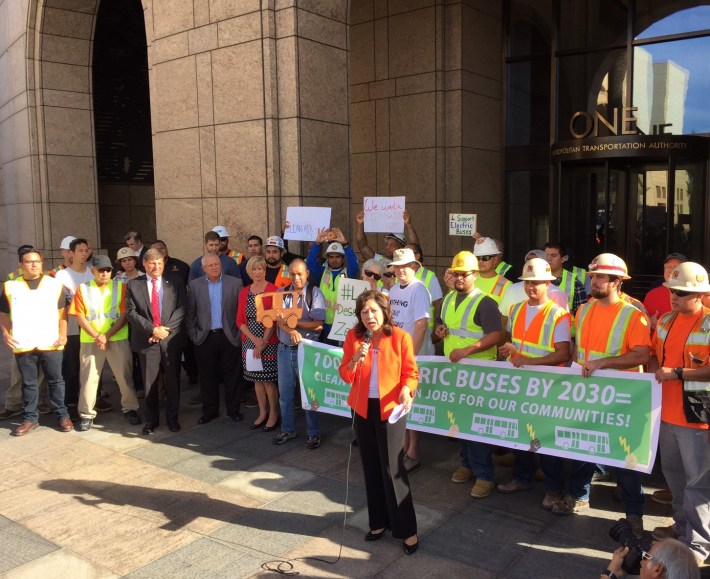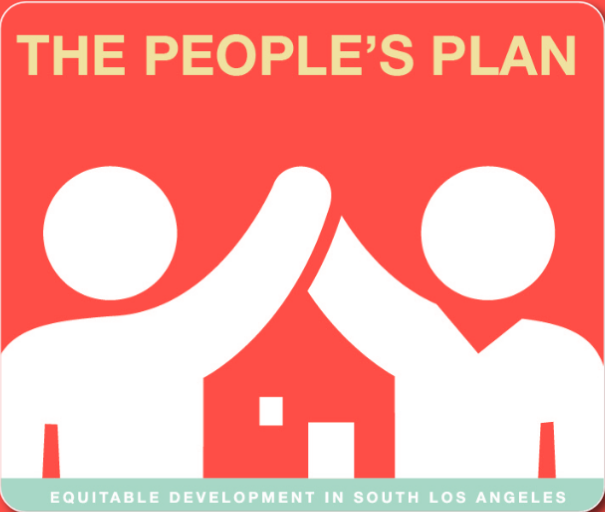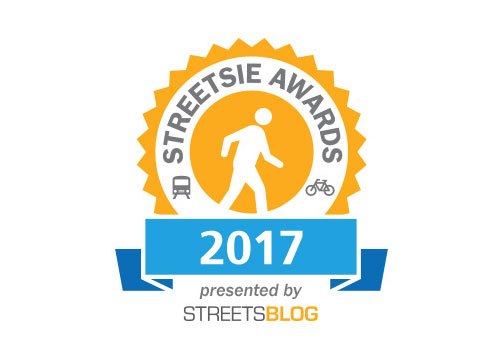Normally, for this relatively recently created-award, we look to individual groups who made a difference over the course of the past year.
The year 2017, however, seemed to be the year of the coalition. Whether it was organizations coalescing in solidarity with the Women's March (or pushing them to look beyond white women's issues), artists, residents, and advocates deepening (or challenging) existing alliances to call out different forms of gentrification in Boyle Heights, or groups from around South L.A. (and beyond) sharing knowledge and strategies at a Resist Gentrification community summit, this was the year of linking arms with other valiant hearts to make some righteous noise, cause some controversy, and get sh*t done.
We've highlighted three coalitions below that pulled off some pretty powerful feats.
Voting starts today and will close on Monday, January 15, 2018. Reader voting accounts for one half of the scoring this year, with one quarter going to SBLA staff votes, and another quarter going to the SBLA steering committee.


The South L.A. BHC groups behind Future Fest - Twenty-five years ago, South Los Angeles residents spilled out into the streets to express their pain at seeing yet another injustice perpetrated against a Black body go unpunished. On the anniversary of the uprising this past year, they again came out into the streets, this time to celebrate their power, resilience, and community, and to recharge each other's spirits for the battles they continue to wage on behalf of their families and neighbors. The organizations that form part of the South L.A. Building Healthy Communities network (a California Endowment community initiative) collaborated on the Future Fest celebration that drew hundreds for a rally at Florence and Normandie and a march to Community Coalition (CoCo) at 81st and Vermont. Attendees celebrated the afternoon with music, art, and advocacy. The event also marked the culmination of Re-Imagine Justice - CoCo's powerful and affirming month-long "living art museum" and panel series commemorating the events of 1992 by taking stock of what South L.A. had endured and where it was headed. See the full list of participant organizations here, photos of the march and rally, here, and our story about what that stock-taking looked like through the eyes of some of the area's youth, here.

L.A. County Electric Bus Coalition - This year the L.A. County Electric Bus Coalition laid the groundwork for a major shift toward quieter, cleaner, healthier, and more environmentally-friendly streets. The coalition led efforts to electrify both Metro and LADOT bus fleets, and both agencies are now committed to full electrification by 2030. Metro will fully electrify its Orange and Silver BRT lines by 2020 and 2021 respectively. At a moment when the federal administration is not only rolling back environmental protections but essentially making it harder for environmentally-friendly ventures to thrive, this shift affirms we are still able to take important steps in the right direction while also benefiting local jobs training and hiring efforts. The coalition consists of environmental and labor organizations, including the Sierra Club, Earthjustice, the International Brotherhood of Electrical Workers Local 11, South Bay 350, Jobs to Move America, Food & Water Watch, and Environment California.

The UNIDAD Coalition and the People's Plan - The UNIDAD Coalition is comprised of South Central residents and organizations who have united in order to be able to engage developers, the city, and official agencies from a position of strength on structural injustices, displacement and gentrification, and the need for community-uplifting investment. Considering the size of South L.A., the politics within the larger community, and the variations in the range of pressing needs faced by those in the area, arriving at a unified platform is no small task. Somehow, participants' commitment to creating "better neighborhoods with the same neighbors" held them together during the decade they spent organizing and engaging residents on their vision for the future of the area and the policies needed to achieve it. The resulting People's Plan spelled out specific policy recommendations that would ensure new developments were affordable, did not uproot existing residents, were integrated into the local economy in ways that helped existing residents strengthen their foothold there, and contributed to the overall health and wellness of the area. UNIDAD's organizing process also paralleled and informed the community plan process as it unfolded over the last ten years. So much so that approximately 75 percent of what was contained in the People’s Plan was reflected in the final drafts of the official Community Plans. As noted in our coverage of the adoption of the Plans here, this unfortunately meant that the City Council set aside some of the more urgent safeguards from the People's Plan. The monumental effort that went into sustaining momentum within the community and maintaining a dialogue with city planners over ten long years, however, was a testament to the importance of sustained engagement with communities and offers a powerful model for others to draw from.
Honorable mentions: We noted some of the dialogues that shaped planning and policy in L.A. this year in the introduction, but want to also give special recognition to the broad coalition of groups and individuals that came together to hand Measure S a resounding defeat. They dedicated countless hours to speaking at forums and to neighbors, knocking on doors and making calls, engaging online, and leveraging relationships to inform people about zoning - possibly one of the least sexy topics on the planet - and the importance of not freezing the already deeply inequitable status quo in place. In that vein, recognition must also be given to some of the groups and advocates from communities where displacement is an urgent and pressing issue (no, we are not referring to you Mr. Weinstein, definitely not you). Many argued in favor of the measure because there were - and continue to be - so few ways to challenge the relative power of developers, politicos, or mainstream approaches to development. Their position forced Angelenos to reckon with tough questions about who was and is being left behind as the city grows and where fault might lie. The debates were often ugly and contentious and, as with so many things this past year, it seems, few walked away unscathed. Hopefully, it made us stronger.
On a more traditional mobility front, Los Angeles Walks and Streets Are For Everyone (SAFE) collaborated to lend a hand in getting Southern California Families for Safe Streets - an organization founded by the family members of loved ones killed in traffic collisions - off the ground this year with a heartbreaking installation that commemorated those that had been lost on Los Angeles' streets.
Past winners: Bike SGV, East Yard Communities for Environmental Justice







